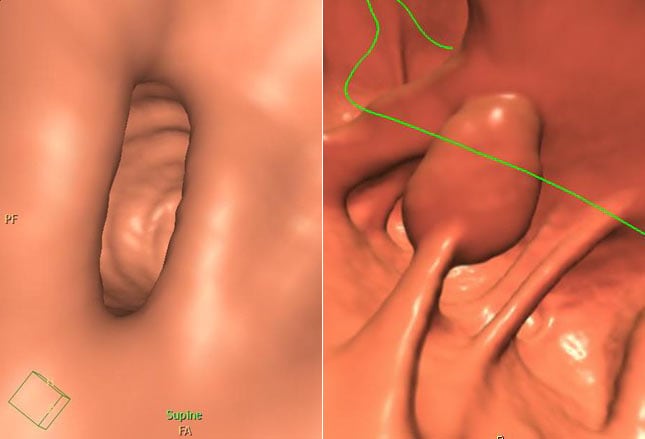Fortunately the biopsy samples were benign villous adenoma.
Carpet like polyps colon.
Most polyps are benign.
The growth and cancer potential of a colon polyp is best appreciated under a microscope histology after its removal.
About 85 percent of polyps are sessile.
A colon polyp is a small clump of cells that forms on the lining of the colon.
They could not remove it during the colonoscopy because it was so large and was flat like a carpet against the colon wall and draped over a haustral fold.
But over time some colon polyps can develop into colon cancer which is often fatal when found in its later stages.
The precursor of colon cancer is called a polyp.
Colon polyps are growths on the lining of your colon or large intestine part of your digestive tract.
Sessile polyps do not have a stalk and are attached to the lining by a broad base.
Others are flat flat polyp or carpet like sessile polyp.
Association between giant villous adenomas carpet like lesion and rectal prolapse is uncommon 4 5 we present a case of an 87 year old man presented to.
In terms of physical appearances most colon polyps are mushroom like having a stalk.
Polyps are one of the most common conditions affecting the colon and rectum occurring in 15 20 percent of the adult population.
Some have a short stalk or pedicle.
Non neoplastic polyps include hyperplastic.
Most of them aren t harmful.
There are two main categories of polyps non neoplastic and neoplastic.
But some can turn into colon cancer over time.
Many polyps are easy to detect because they are shaped like a mushroom.
For that reason.
Most colon polyps are harmless.
March 6 2008 they are usually missed or overlooked during colon cancer screening but flat lesions within the lining of the colon and rectum may be more likely to be cancerous than polyps new.
Polypoid polyps look like a mushroom but flop around inside the intestine because they are attached to the lining of the colon by a thin stalk.
Some polyps are flat or carpet like spreading over the mucosal surface of the bowel.
Doctors find and remove polyps during colonoscopy.
Most polyps are protrusions from the lining of the intestine.
Villous adenomatous polyps of the colon represent a real potential for cancer development 1 they also may be involved in abnormal secretory activity associated with diarrhea and electrolyte imbalance rectal bleeding or obstruction 2 3.
These subtle flat lesions also require a special technique called endoscopic mucosal resection to remove them safely and completely.
After the histological analysis polyps can generally be classified as being.
The relationship of certain polyps to cancer is well established.
Flat polyps are the least common type of colon polyp and are flat or even slightly depressed.

